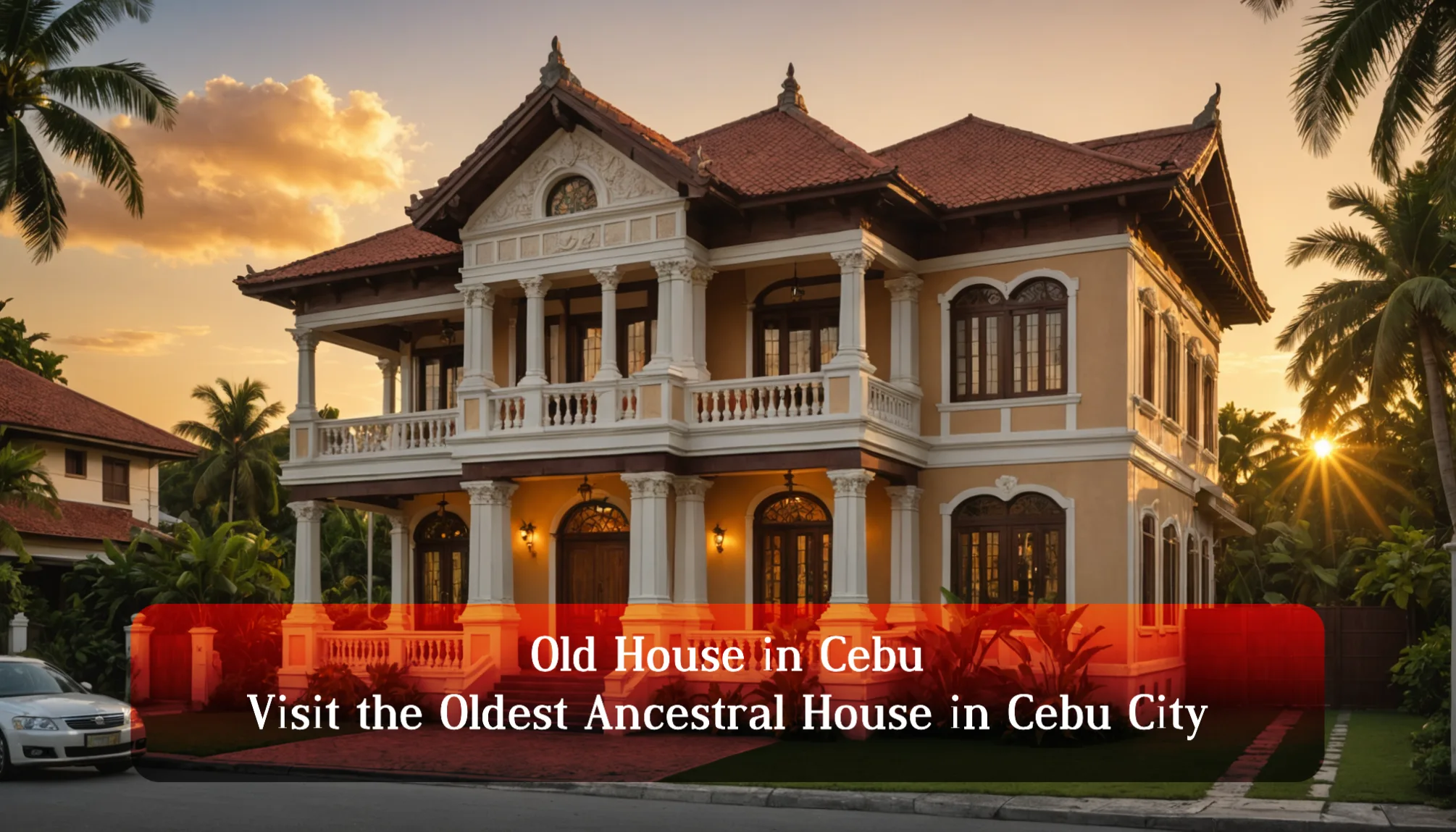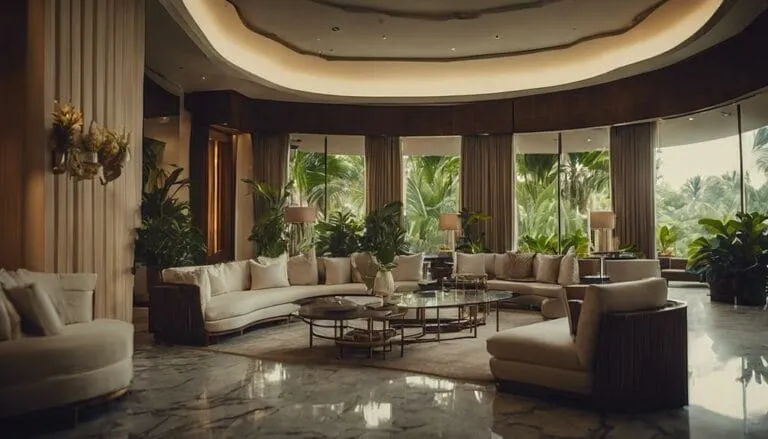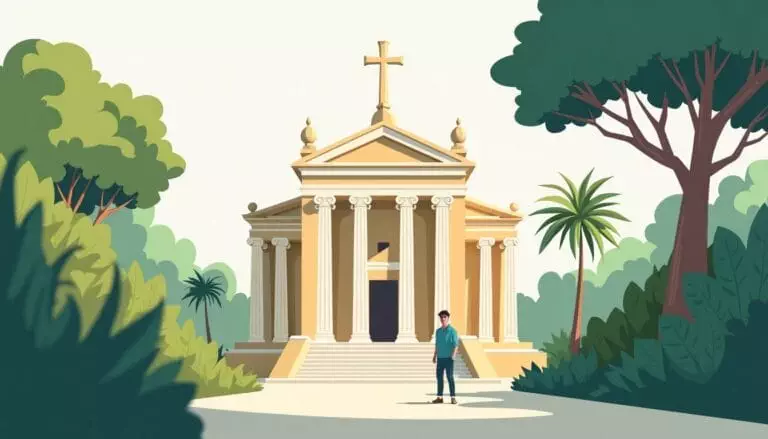Old House in Cebu: Visit the Oldest Ancestral House in Cebu City
Standing proud in the heart of Cebu’s historic district, the Old House in Cebu tells fascinating stories spanning three centuries of Philippine history. This ancestral house, built between 1675 and 1700, represents one of the most well-preserved examples of Spanish colonial architecture mixed with unique Chinese influences.
For business travelers and event organizers seeking an extraordinary venue, this heritage icon offers more than just historical charm. The house features stunning coral stone structures, intricate wood designs, and period furniture that transport visitors back in time. With its spacious halls and atmospheric courtyards perfect for special functions, this architectural treasure provides a unique backdrop for corporate events, cultural tours, and photography sessions. Don’t miss the chance to experience this remarkable piece of Cebu’s past – your journey through Philippine history awaits behind these ancient walls.
The Rich History of the Ancestral House in Cebu
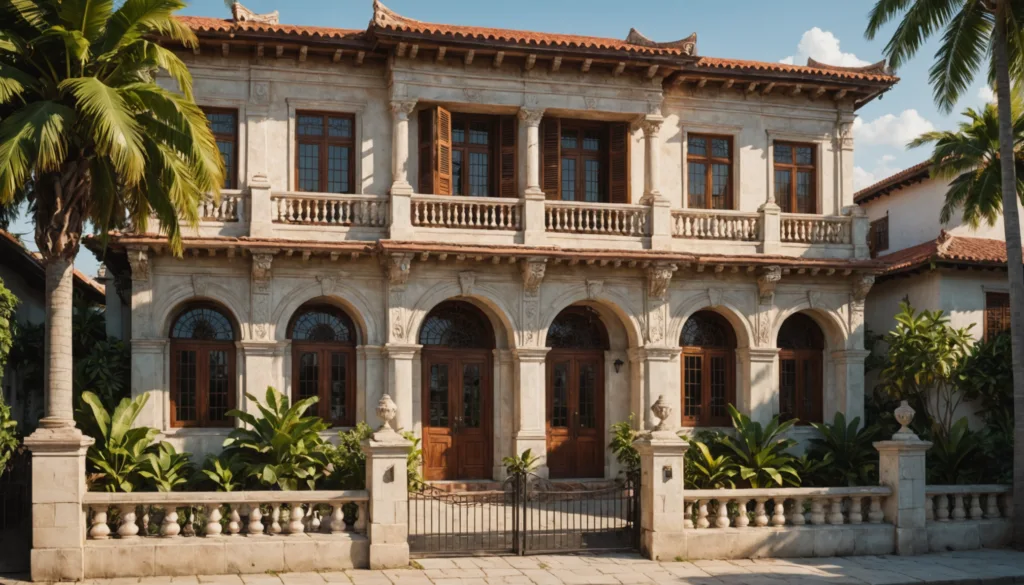
This Old House in Cebu traces its beginnings to the late 1600s. Known today as the Yap-Sandiego Ancestral House, it was built between 1675 and 1700 in Parian, Cebu City. Don Juan Yap and his wife, Doña Maria Florido, oversaw its early years. This structure combines coral stone and hardwood, which helps it withstand tropical weather for more than three centuries.
Overview of the Oldest Ancestral House in Cebu
Chinese and Spanish influences shape every corner of this iconic home. Coral walls and thick wooden beams support a two-story layout typical of Spanish colonial architecture. Fu dogs, or guardian lions, greet visitors at the entrance, showing the family’s Chinese merchant heritage. Inside, period furniture and religious artifacts highlight its multicultural past.
The Spanish Colonial Influence in Cebu City
Terra cotta roof tiles cover the upper level, reflecting classic Spanish building methods. Wide windows allow cross ventilation, keeping the house cool in Cebu’s humid climate. Original wood flooring still supports guests who explore relics from the 17th century. Even the interior layout—featuring rooms around a central living area—mirrors Spanish traditions.
Chinese Contributions to Cebu’s Ancestral Houses
Chinese traders in colonial Cebu introduced careful craftsmanship and Feng Shui principles. These features appear in the Yap-Sandiego Ancestral House through ornate carvings and carved wooden screens. Many Chinese families in Parian enriched Cebu’s economy by trading silk, ceramics, and spices, leaving a lasting mark on local culture.
Timeline of Historical Events and Ownership
| Period | Event |
|---|---|
| 1675–1700 | House construction under Don Juan Yap |
| 1880s | Renovation by Don Mariano Sandiego |
| 1950s | Property inherited by Val Sandiego |
| 2008 | Opened as a public museum in Cebu |
Carbon dating of the house’s wooden beams confirms its 17th-century origin. Experts rank it among the oldest residential structures in the Philippines. Visitors still find original heirlooms and furnishings on display, illustrating Cebu’s fusion of Spanish colonial style and Chinese artistry.
Reasons to Visit the Old House in Cebu
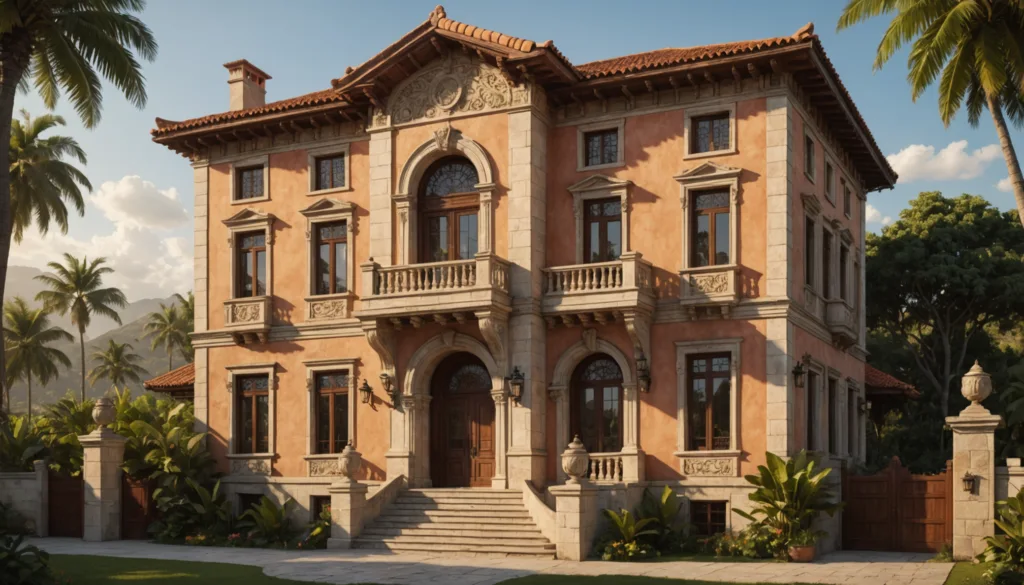
The Old House in Cebu, known historically as the Yap-Sandiego Ancestral House, stands in the Parian district and dates back to around 1675. It highlights Cebu’s colonial heritage and reveals how earlier generations shaped local culture.
Top Attractions Near the Oldest Ancestral House in Cebu
Several important landmarks surround this ancestral site. Colon Street, recognized as the oldest street in the Philippines, lies nearby. You can also explore the Heritage of Cebu Monument for a sweeping view of the city’s rich history (Wikipedia). The Santo Niño Basilica, considered one of the holiest churches in the country, is within walking distance. Casa Gorordo Museum adds another engaging stop, offering Spanish-era architecture and exhibits.
Unique Features of the Old House in Cebu
This coral stone structure has a foundation made from sturdy coral blocks and molave wood. Its curved Chinese-style roof and capiz shell windows bring a blend of Asian and Spanish colonial influences. Inside, you will see authentic period furniture that reflects daily life between the 17th and 18th centuries. Each detail showcases the house’s role in preserving Cebu’s vibrant past.
Visitor Experiences: What to Expect
Guided tours focus on family history, local traditions, and furniture craftsmanship. Cultural demonstrations often occur during festivals, revealing older art forms and religious practices. An entrance fee of ₱50 grants access to the two-story interior, where visitors often find antique religious images and well-preserved paintings.
Photography and Social Media Opportunities
Several prime spots invite photography, including the carved wooden entrance and the interior courtyard with period furnishings. Special areas, like the prayer room, require permission before taking pictures. Commercial photography needs a permit, but personal snapshots are welcome in designated sections. Remember to follow posted rules for a respectful visit.
| Day | Hours | Regular Rate | Student Rate |
|---|---|---|---|
| Tuesday-Sunday | 9:00 AM – 6:00 PM | ₱50 | ₱25 |
| Monday | Closed | – | – |
The Architectural Significance of Cebu’s Ancestral Houses
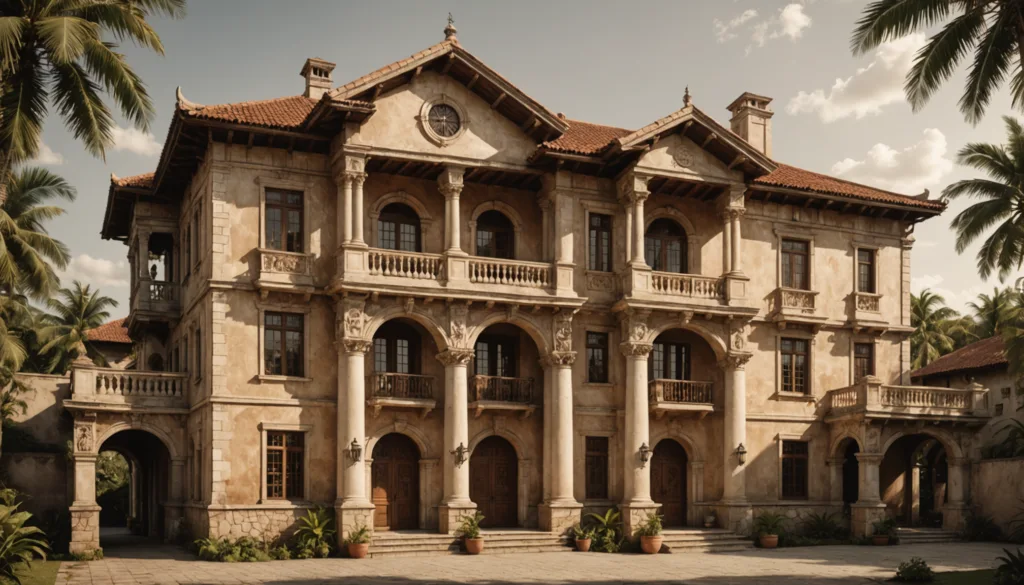
You can discover a rich blend of Spanish colonial elements and local building traditions in each Old House in Cebu. These ancestral homes date back to the late 17th century and feature coral stone foundations, hardwood floors, and capiz windows. They preserve local culture by showcasing how engineering methods and artistry have kept these structures strong for centuries.
Comparing Architectural Styles: Old and New in Cebu
Traditional ancestral houses follow the bahay na bato design. You will see a stone base supporting a wooden upper story, plus wide capiz windows that invite natural light. These layouts often include a zaguan, or interior courtyard, and steep tile roofs that shield interiors from tropical rains. In contrast, modern Cebu buildings rely on concrete, steel, and glass. Climate control often replaces natural ventilation, and industrial materials stand in for coral stone or Philippine hardwood.
| Feature | Traditional House | Modern Building |
|---|---|---|
| Foundation | Coral stone blocks | Concrete |
| Walls | Stone (first floor), wood (second floor) | Concrete/steel |
| Windows | Sliding capiz shells | Glass |
| Ventilation | Natural through ventanillas | Air conditioning |
| Materials | Local hardwood, coral stone | Industrial materials |
Preservation Efforts for Cebu’s Oldest Ancestral House
You will find ongoing work to keep each Old House in Cebu intact. The Yap-Sandiego residence, for instance, receives regular repairs and careful restoration of its coral stone walls and wooden supports. It remains under national protection, limiting public access to ensure its floors and beams survive well into the future. Thorough documentation also helps guide accurate preservation of Spanish colonial architecture.
Influence of Spanish Colonial Architecture
Spanish colonial influence appears in thick ground-floor walls, ventanillas below main windows, and an elevated second-floor living area. These features helped adapt homes to local weather and cultural needs. You’ll notice that every Old House in Cebu reveals this heritage through elegant latticework, broad eaves, and flexible interior spaces.
Structural Engineering and Materials Used
You can appreciate the engineering behind these ancestral homes through their use of coral stone blocks for foundations. These blocks resist moisture and offer a sturdy base. Upstairs, builders often chose Philippine hardwoods, like molave, to support floors and walls. Many rooftops feature clay tiles that shed heavy rain. Wooden-framed capiz windows complete the distinctive look of each ancestral house, providing a durable design that has endured for three centuries.
Tour Options for Exploring Cebu’s Ancestral Homes
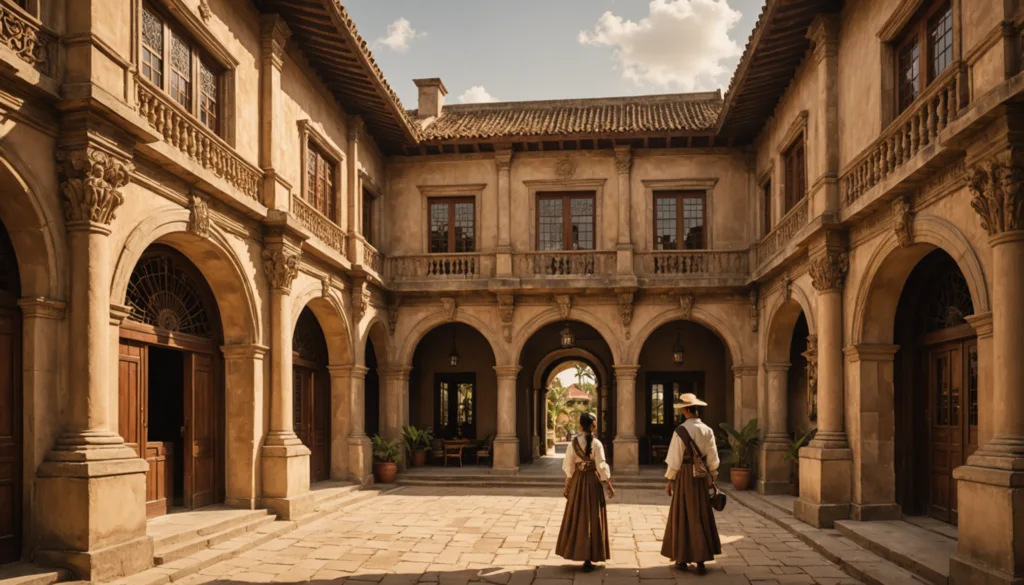
Explore the Old House in Cebu through different tour options that reveal local architecture and heritage. These tours help you understand how Spanish and Chinese influences shaped Cebu’s treasured ancestral houses.
Guided Tours of the Oldest Ancestral House in Cebu
Join a 30- to 45-minute guided tour at the Yap-Sandiego Ancestral House, offered daily from 9:00 AM to 6:00 PM. Knowledgeable guides share stories in English or Cebuano and explain unique features like coral stone walls and antique furniture. You gain access to every room, view religious art, and capture memorable photos of this well-preserved site. Tours shed light on Cebu’s architectural evolution and family histories (Tripadvisor).
Self-Guided Tour Tips for Cebu City
Design your own heritage walk by starting near Colon Street, the oldest street in the Philippines. Look for historical markers and monuments around the Parian district, and pause at shaded spots to beat midday heat. Early morning or late afternoon visits let you appreciate architectural details without the crowds. Plan your route to include the Old House in Cebu for a closer look at centuries-old structure (Cebudailynews).
Cultural Tours Highlighting Cebu’s Historical Sites
Several heritage tours combine multiple stops, such as Casa Gorordo Museum, Jesuit House, and the Cathedral Museum. These immersive programs connect Spanish colonial and Chinese influences through guided storytelling. You witness cultural dances, traditional art, and architecture that has endured for centuries. This broader itinerary helps you compare diverse building styles and community traditions (Casa Gorordo Museum, Jesuit House Cebu).
Special Event and Private Function Bookings
You can reserve parts of the ancestral house for photography sessions, educational tours, and small gatherings. All bookings follow strict preservation rules, which protect antique furnishings and coral stone foundations. Curators often offer recommendations to ensure events respect historical integrity. This unique venue provides a rare glimpse into Cebu’s past and makes any celebration more meaningful.
Experience Cebu’s architectural legacy from Southpole Central Hotel. Just a short walk from the Yap-Sandiego Ancestral House, discover 17th-century coral stone structures and intricate hardwood designs, just as described in our in-depth look at Cebu’s heritage. Return to the modern comforts of Southpole Central after exploring this fusion of Spanish and Chinese influences.
Expert Insights on Cebu’s Historical Legacy
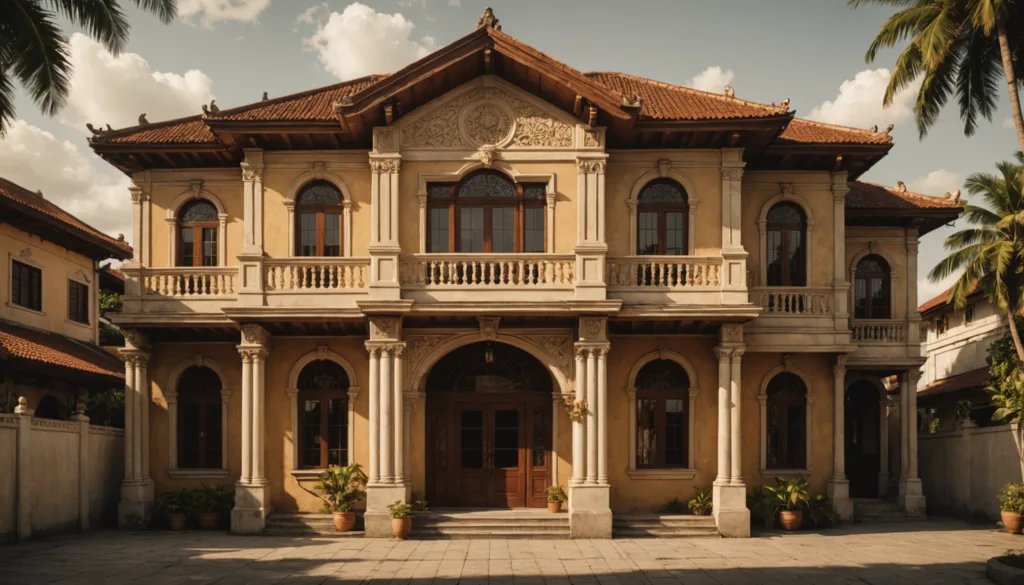
Current Research on Ancestral Houses in the Philippines
Recent studies from the National Historical Commission of the Philippines show that Cebu has over 30 heritage houses that date back to the Spanish colonial period. The 17th century Yap-Sandiego Ancestral House, recognized as one of the oldest Chinese houses outside China, highlights the fusion of Spanish and Chinese details.
Researchers document these sites using advanced 3D scanning, which reveals coral stone foundations and wood preservation techniques developed during the 1600s. Some houses stand near Colon, the oldest street in the Philippines, while many others cluster around the historic Parian district.
Best Practices for Visiting Historical Sites
Heritage conservation protocols in Cebu protect these valuable structures. Visitors must avoid using flash photography and respect marked pathways to preserve sensitive artifacts. Reception areas often require registration, especially for weekday group tours. Early morning visits, typically from 8 to 10 AM, reduce crowds and help maintain a peaceful environment near the Old House in Cebu and other heritage sites.
Future Trends in Preserving Cebu’s Old Houses
Preservation strategies blend tradition and innovation. Many groups use 3D scanning to capture architectural details, while virtual tours and digital archives expand access to these weather-beaten but proud buildings. Officials coordinate public-private partnerships that finance ongoing maintenance and develop modern conservation techniques. Community programs aim to sustain the legacy of these coral stone walls, capiz windows, and Spanish colonial facades.
| Technology | Purpose | Implementation Stage |
|---|---|---|
| 3D Scanning | Architectural detail capture | Active |
| Virtual Tours | Remote access development | In Progress |
| Digital Archives | Historical record preservation | Ongoing |
Expert Interviews and Conservation Stories
Architectural scholars confirm that some Cebuano houses have footings from the early 1600s. These ancestral homes reveal a mix of European and Chinese styles, seen in carved beams and intricate wood designs. Heritage specialists also note how traditional coral stone walls continue to influence modern restoration. Recent excavations uncovered relics that support the houses’ centuries-long survival, including intact hardwood frames and vintage capiz windows.
Practical Visitor Information
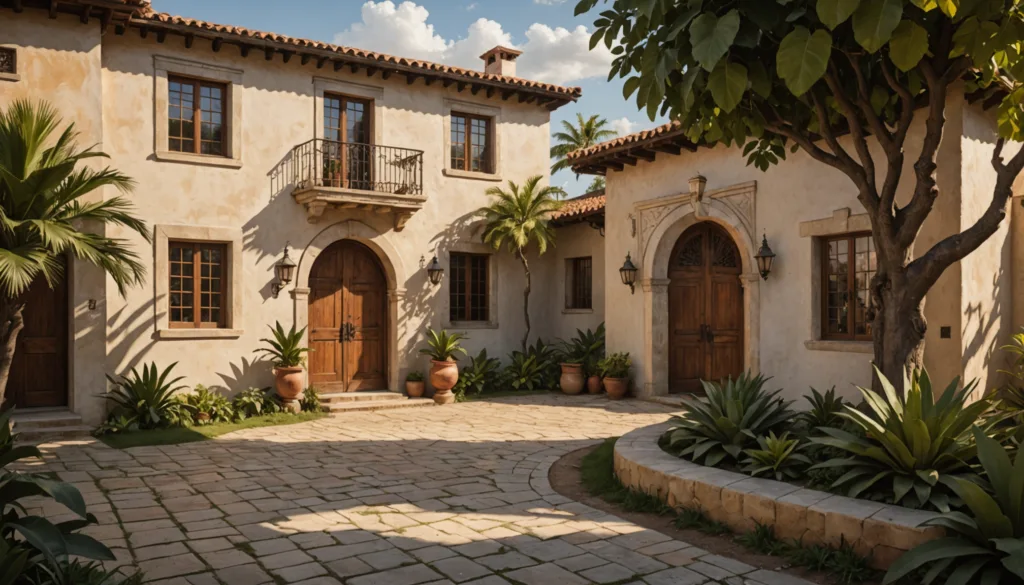
Your visit to the Old House in Cebu will be more rewarding when you have key details in mind. This section shares opening hours, admission fees, transportation options, and nearby dining choices.
Opening Hours and Admission Fees
You can explore the Yap-Sandiego Ancestral House daily from 9:00 AM to 6:00 PM. The standard entry fee is ₱50, while students and seniors pay ₱40 each. Children under seven enter at no charge, and groups of ten or more pay ₱45 per visitor. Check holiday schedules and possible changes with local sources.
Transportation and Parking Options
Public jeepneys marked for Parian or Colon Street provide an inexpensive ride. You can also use taxis or Grab cars; request a drop-off near the Colon Obelisk in Cebu’s heritage district. Parking is limited along Mabini Street, so arrive early if you plan to drive. Walking from Colon Obelisk to the old house takes about ten minutes.
Accessibility and Facilities
The first floor offers wheelchair access and a small souvenir shop. Photography is allowed, but avoid flash to protect any delicate artworks. Restrooms are located on the ground level. The second floor features steep wooden stairs, reflecting the house’s 17th-century design.
Nearby Accommodations and Dining
| Type | Distance | Options |
|---|---|---|
| Hotels | Within 1 km | Budget and mid-range accommodations |
| Restaurants | 5–10 min walk | Local eateries and casual cafes |
| Shopping | 15 min walk | Various stores along Colon Street |
| Other Sites | 5–15 min walk | Cathedral Museum, Jesuit House |
These options bring you closer to Spanish colonial and Chinese influences within Cebu’s heritage district. Always confirm event schedules or rates with official channels.
Conclusion
The oldest ancestral house in Cebu stands as a remarkable testament to the island’s rich cultural heritage, blending Spanish colonial architecture with Chinese influences. This historical treasure offers visitors a unique glimpse into the past through its well-preserved features, from intricate wood designs to traditional coral stone structures that have withstood the test of time.
Whether you’re exploring through guided tours or joining cultural events, the Yap-Sandiego ancestral house provides an authentic experience of Cebu’s vibrant history. The house’s perfect combination of architectural beauty and historical significance makes it an essential stop for anyone interested in Philippine heritage, while its location near other cultural attractions creates an ideal starting point for discovering more of Cebu’s fascinating past.
Planning your visit to this ancestral home opens the door to countless stories, traditions, and architectural wonders that continue to inspire new generations. Take a look at this remarkable piece of Philippine history and become part of its ongoing legacy of cultural preservation and appreciation.
FAQs
1. What are the visiting hours and admission fees?
You can visit daily from 9:00 AM to 6:00 PM. Admission costs PHP 50 for adults and PHP 40 for students (with valid ID). Children under age 7 are admitted free. Group rates apply to parties of 10 or more.
2. Is photography allowed inside?
You may take personal photos inside, but no flash is allowed to protect delicate artifacts. Commercial shoots need advance permission, and some rooms have specific photo restrictions.
3. How accessible is the house for visitors?
You will find the ground floor accessible to wheelchairs. However, the upper levels require climbing original wooden stairs because there is no elevator. Trained staff can assist you if you have mobility concerns.
4. What can visitors expect to see?
You will see antique furniture, period household items, and coral stone walls. The house retains many Spanish colonial and Chinese architectural elements, including well-preserved wooden beams. These features offer a glimpse into the history of Cebu City.
5. Are guided tours available?
Guided tours in English and Cebuano begin regularly. You can also explore at your own pace using printed information sheets. Larger groups often schedule special tours, and some cultural itineraries include this ancestral landmark alongside other heritage sites.

